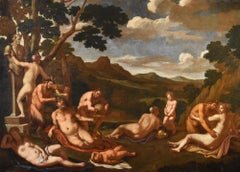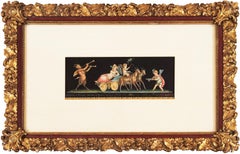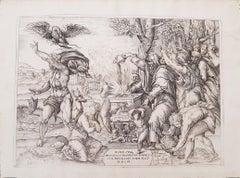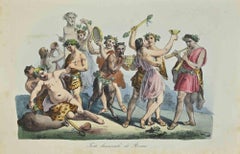Objekte ähnlich wie Bacchanal
Möchten Sie mehr Bilder oder Videos?
Zusätzliche Bilder oder Videos von dem*der Anbieter*in anfordern
1 von 10
Giovanni Andrea PodestàBacchanal1649
1649
2.108,69 €
Angaben zum Objekt
Bacchanal
Etching, 1649
Inscribed in the square left: "Magnificentis/simo Principi/Paolo lorda/no. II Bracci/ani Duci/Aud. P.DDD/1640; Inscribed on right: Rome apud Franciscsum Saluucium
Condition: Usual centerfolds from paper manufacture
Plate: 10 3/8 x 15 1/2"
Sheet: 11 1/2 x 16 1/2";
References:
Bartsch XX.4
Sopher Plate 145
An impression of this image is in the collections of the Philadelphia Museum of Art and the National Gallery of Art, Washington
An exceptionally rich impression in excellent condition.
From Wikipedia, the free encyclopedia
Putti as Allegory of Music
Giovanni Andrea Podestà or Giovanni Andrea Podesta (1608 - c. 1674) was an Italian painter and engraver who was principally active in Rome. His principal subject matter is children playing in landscapes with classical objects. His works show the influence of Poussin's Arcadian landscapes and bacchanals, which were ultimately derived from Titian's bacchanals.
Life
Giovanni Andrea Podestà was born in Genoa. He was formed in Genoa with Giovanni Andrea de Ferrari and Domenico Fiasella according to the information provided by the contemporary Genoese biographer Raffaele Soprani. He is also recorded as an apprentice of Giovanni Battista Paggi in 1627.
His presence is documented from in 1634 in Rome where he made drawings after the statues and ancient reliefs at the famous Giustiniani collection. These were subsequently engraved for publication in the 'Galleria Giustiniani'. The artist's career ran a course similar to that of the young Domenico Fiasella. In Rome his art evolved in contact with the works of Poussin, Andrea di Leone, Pietro Testa and the Flemish artists François Duquesnoy and Karel Philips Spierincks.
In 1650 Podesta became a member of the Accademia di San Luca in Rome. He died in Genoa.
Work
A majority of Podestà's paintings depict children playing amid classical objects in landscapes. Few of his paintings have survived and his work is now mainly known from the etchings he made himself after his compositions. In particular a series of prints published in Rome which date from 1636 to 1661 form an important source of information on his work.
Putti in a Landscape
Podestà made prints after the bacchanals of Titian, which he dedicated to powerful patrons. He dedicated a series of prints to the pleasures of wine to Paolo Giordano Orsini II, Prince of Bracciano. Orsini also owned multiple paintings by Podestà, including two landscapes and seven small paintings of seafood. A Worship of Venus etched after Titian was dedicated to Cassiano dal Pozzo and other prints of bacchanals to Fabio della Cornia. The artist clearly tried tocurry favour with the Barberini family through these dedications.[3] Cassiano dal Pozzo was known for his archaeological interests. Podestà's acquaintance with Cassiano dal Pozzo may have played a role in Podestà’s artistic development and may have put him in the circle of Poussin. This circle included Flemish artists such as the sculptor François Duquesnoy and the painter Karel Philips Spierincks who at one time or the other shared a home in Rome and also had common artistic interests. In this circle there was an interest in Classicism as well as a growing interest and admiration for the bacchanals of Titian. This found expression in copies and reproductions after Titian as well as new compositions inspired by the theme of the bacchanals. The mutual influence of the artists in this circle is clear from the fact that Podestà 's Bacchus and Ariadne (At Arte Antico) cites in the putto who scares another putto with a mask similar figures in a Drunken Silenus of the Flemish painter Karel Philips Spierincks.
The quality of his work and its closeness to the Poussin circle was such that it is often difficult to distinguish his work from compositions by Poussin and Spierincks. His work has considerable charm, a feature sometimes lacking in the work of his more illustrious contemporaries. One scholar noted that 'Although Podestà was neither a great designer nor a great draughtsman, his amusing conceits display the lighter side of the often sober classical devotees in Rome in the 1630s and 1640s.' Although a rather marginal artist, his works depicting putti at play definitely had an influence on late Genoese Baroque painting, such as on the decorative artists of the 'Casa Piola'.
The few drawings by Podesta that have been preserved show features familiar from his etchings: contorted facial expressions, small twisting figures, patches of dark cross-hatching and an interest in still-life. In their precision they are similar to and possibly derived from Sinibaldo Scorza, whose prints may have been an inspiration for Podestà's own etchings.
- Schöpfer*in:Giovanni Andrea Podestà (1615 - 1674, Italienisch)
- Entstehungsjahr:1649
- Maße:Höhe: 29,21 cm (11,5 in)Breite: 41,91 cm (16,5 in)
- Medium:
- Bewegung und Stil:
- Zeitalter:
- Zustand:
- Galeriestandort:Fairlawn, OH
- Referenznummer:Anbieter*in: FA95541stDibs: LU14014429832
Anbieterinformationen
5,0
Anerkannte Anbieter*innen
Diese renommierten Anbieter*innen sind führend in der Branche und repräsentieren die höchste Klasse in Sachen Qualität und Design.
Platin-Anbieter*in
Premium-Anbieter*innen mit einer Bewertung über 4,7 und 24 Stunden Reaktionszeit
Gründungsjahr 1978
1stDibs-Anbieter*in seit 2013
815 Verkäufe auf 1stDibs
Typische Antwortzeit: <1 Stunde
Verbände
International Fine Print Dealers Association
- VersandAngebot wird abgerufen …Versand von: Fairlawn, OH
- Rückgabebedingungen
Einige Inhalte dieser Seite wurden automatisch übersetzt. Daher kann 1stDibs nicht die Richtigkeit der Übersetzungen garantieren. Englisch ist die Standardsprache dieser Website.
Authentizitätsgarantie
Im unwahrscheinlichen Fall eines Problems mit der Echtheit eines Objekts kontaktieren Sie uns bitte innerhalb von 1 Jahr für eine volle Rückerstattung. DetailsGeld-Zurück-Garantie
Wenn Ihr Objekt nicht der Beschreibung entspricht, beim Transport beschädigt wurde oder nicht ankommt, kontaktieren Sie uns bitte innerhalb von 7 Tagen für eine vollständige Rückerstattung. DetailsStornierung innerhalb von 24 Stunden
Sie können Ihren Kauf jederzeit innerhalb von 24 Stunden stornieren, ohne jegliche Gründe dafür angeben zu müssen.Geprüfte Anbieter*innen
Unsere Anbieter*innen unterliegen strengen Dienstleistungs- und Qualitätsstandards, wodurch wir die Seriosität unserer Angebote gewährleisten können.Preisgarantie
Wenn Sie feststellen, dass ein*e Anbieter*in dasselbe Objekt anderswo zu einem niedrigeren Preis anbietet, werden wir den Preis entsprechend anpassen.Zuverlässige weltweite Lieferung
Unsere erstklassigen Versandunternehmen bieten spezielle Versandoptionen weltweit, einschließlich individueller Lieferung.Mehr von diesem*dieser Anbieter*in
Alle anzeigenDas Säugling Jupiter, der von der Ziege Amaltheia ernährt wird (Der Geburt von Jupiter)
Von Luigi Quaini
Das Jupiterkind, das von der Ziege Amaltheia gesäugt wird
(Die Geburt des Jupiter)
Rötel und Lavierung auf gebrochenem Papier, um 1700
Vorzeichenlos
Er wurde Quaini von Dwight Mille...
Kategorie
18. Jahrhundert und früher, Barock, Figurative Zeichnungen und Aquarelle
Materialien
Kreide
Szene II, Le Nozze Degli Dei
Von Stefano Della Bella
Szene II, Le Nozze Degli Dei
Radierung, 1637
Signiert in der Platte unten links
Die Szene stellt den ersten Moment dar, in dem Diana, umgeben von ihren Nymphen, eine erfolgreiche Hir...
Kategorie
1630er, Alte Meister, Landschaftsdrucke
Materialien
Radierung
Ostiakes
Von Cornelis de Bruijn
Ostiakes
Kupferstich, 1718
Aus: Voyages de Corneille le Brun par la Moscovie, en Perse, et aux Indes Occidentales (französische Übersetzung, 1718), Kapitel XXI
Die Ostyak gehören zu ...
Kategorie
1710er, Alte Meister, Landschaftsdrucke
Materialien
Gravur
The Garden of Love (nach Peter Paul Rubens [1577-1640]
Von Christoffel Jegher
Der Garten der Liebe (nach Peter Paul Rubens [1577-1640])
Holzschnitt-Diptychon, ca. 1633-1636
Jedes der beiden Blätter ist in der Platte unten rechts signiert
Ein posthumer Abdruck ...
Kategorie
17. Jahrhundert, Alte Meister, Figurative Drucke
Materialien
Holzschnitt
Eurito Echione e Etalide Argonot
Eurito Echione e Etalide Argonot
Radierung, 1664
nach Remigio Cantagallina
Aus: La manifique carousel fait sur le fleuve de l "Arne a Florence, pour le Mariage du Grand Duc, (18 Tafe...
Kategorie
1660er, Alte Meister, Tierdrucke
Materialien
Radierung
Ein Paar ovale Zeichnungen für Ovid, Metamophoses
Von Charles Joseph Natoire
Ein Paar ovale Zeichnungen für Ovid, Metamophoses
Links: Der Triumph der Amphitrite (Buch I)
Richtig: Diana und Actaeon (Buch III)
Aus: Ovid, Metamophosen
Diese mythologischen Studi...
Kategorie
1760er, Barock, Porträtzeichnungen und - aquarelle
Materialien
Tinte, Stift
Das könnte Ihnen auch gefallen
Bacchanale Mythologische Carpioni Gemälde Öl auf Leinwand 17. Jahrhundert Altmeister Kunst
Giulio Carpioni (Venedig, 1613 - Vicenza, 1678), zuzuschreiben
Bacchanale
Öl auf Leinwand 98 x 132 cm. - Im Rahmen 120 x 154 cm.
Dieses hochwertige und gut erhaltene Gemälde ...
Kategorie
17. Jahrhundert, Alte Meister, Gemälde
Materialien
Öl
13.312 € Angebotspreis
20 % Rabatt
Bacchanal", Pompeji Mitte des Jahrhunderts, Römische Mythologie, Bacchus, Neoklassisch
Von Giovanni Gallo
Signiert unten rechts: "Gallo Giovanni" für Giovanni Gallo (Italiener, 20. Jahrhundert) und datiert 1954.
Betitelt unten links: "Eseguito a Pompei, 'Trionfo di Bacco'" (Geschehen in...
Kategorie
1950er, Aktzeichnungen und -aquarelle
Materialien
Papier, Gouache
Die Tapferkeit der Iphigenia
Von Nicolas Beatrizet
Schwarz-Weiß-Radierung und Kaltnadel auf Drahtgeflecht, die den Mythos der Opferung der Iphigenie darstellen. Auf dem Altar ist in Großbuchstaben "Iphigenie" zu lesen. Am unteren lin...
Kategorie
16. Jahrhundert, Alte Meister, Figurative Drucke
Materialien
Kaltnadelradierung, Radierung
Uses and Customs – Bacchanal Feast – Lithographie – 1862
Uses and Customs - Bacchanal Feast ist eine Lithographie auf Papier aus dem Jahr 1862.
Das Kunstwerk gehört zur Suite Gebräuche und Sitten aller Völker des Universums: "Geschichte d...
Kategorie
1860er, Moderne, Figurative Drucke
Materialien
Lithografie
Bacchanalien - Radierung von P. Fontana nach A. Tofanelli - 1821
Von Pietro Fontana
"Baccanale con Bacco, Sileno, Fauni, e Menadi" ist eine wunderschöne schwarz-weiße Radierung auf Papier des italienischen Künstlers Pietro Fontana (Bassano Romano, 1762 - Rom, 1837)...
Kategorie
1820er, Moderne, Figurative Drucke
Materialien
Radierung
Les Danades, aus „Le Temple des Muses“
Von Bernard Picart
Schwarz-Weiß-Radierung auf Walzdrahtpapier, die den Mythos der Danaiden darstellt, die dazu verdammt sind, gebohrte Gefäße mit Wasser zu füllen".
Platte mit frischem Abdruck aus de...
Kategorie
1740er, Alte Meister, Figurative Drucke
Materialien
Radierung
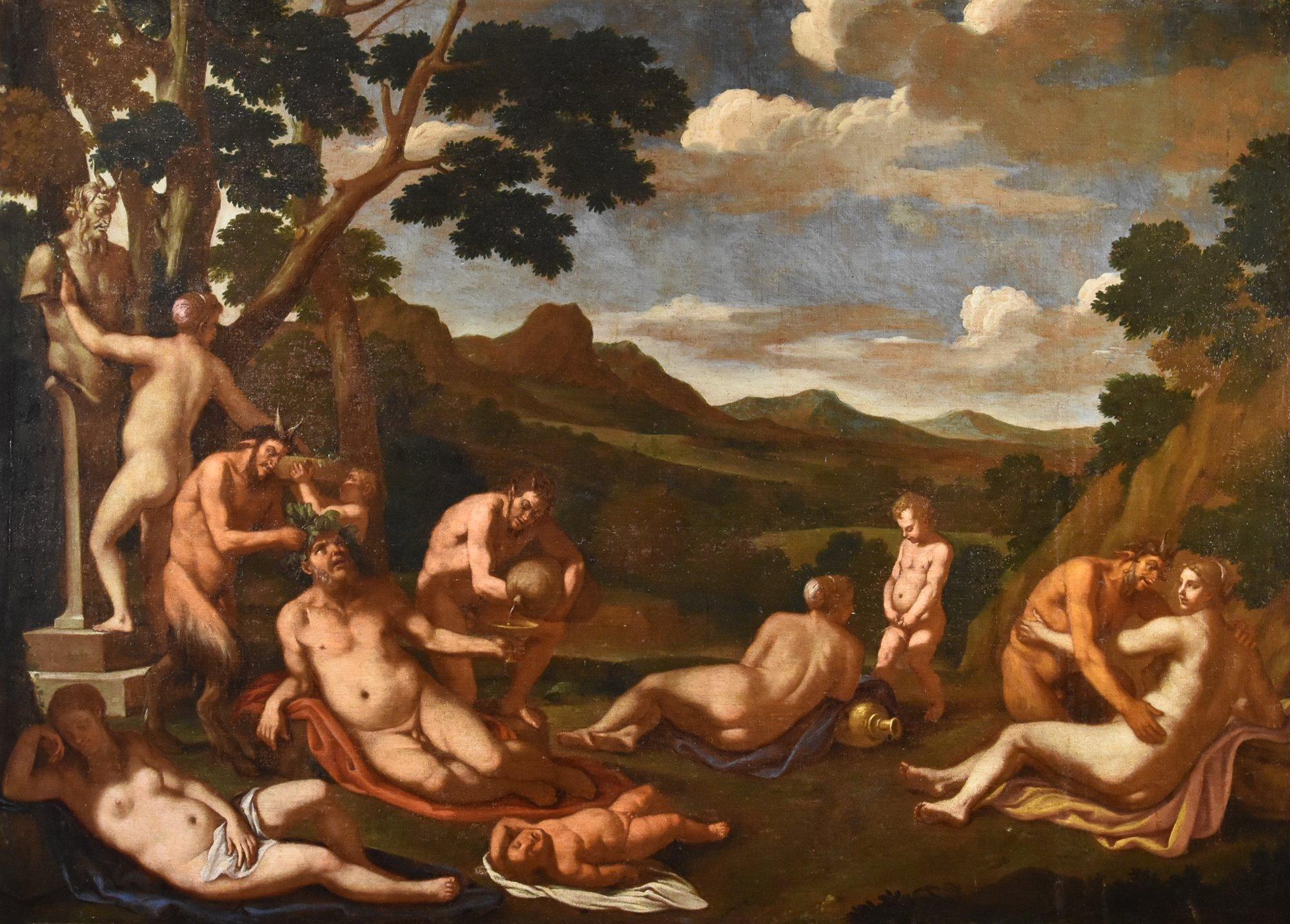
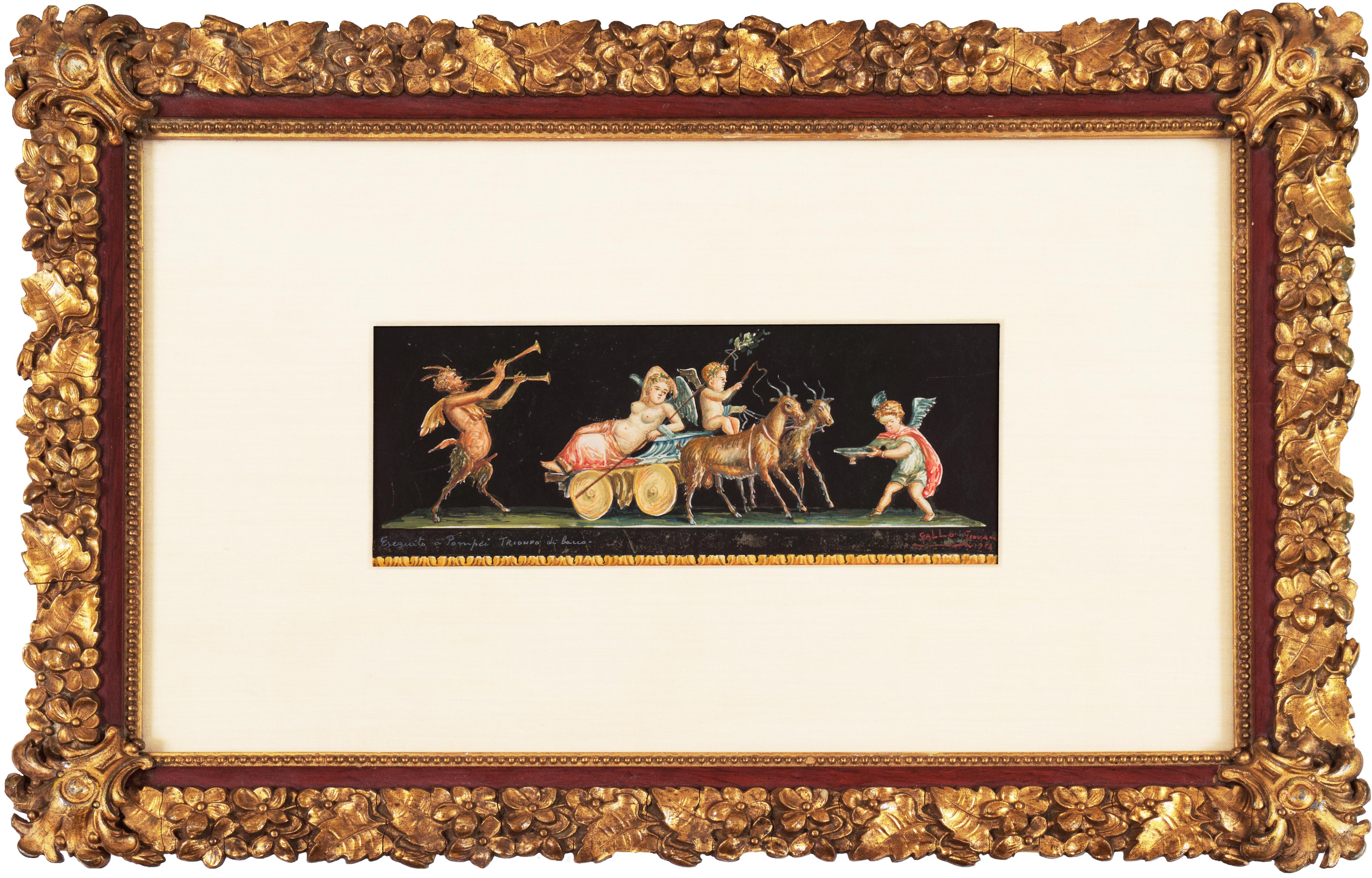
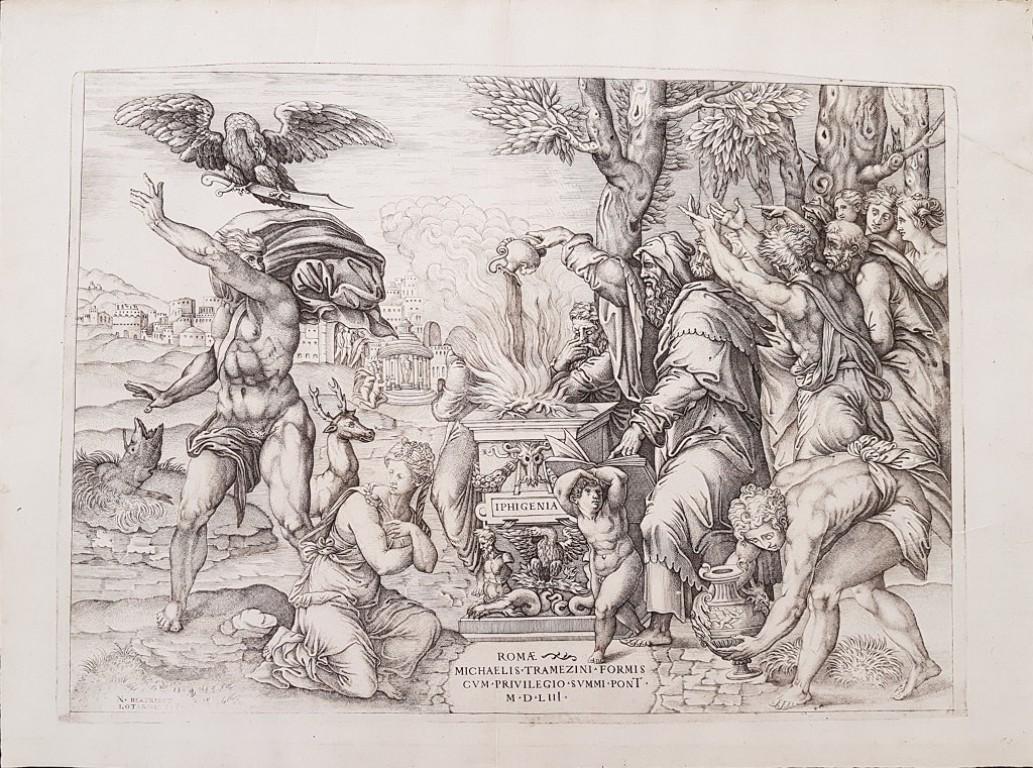
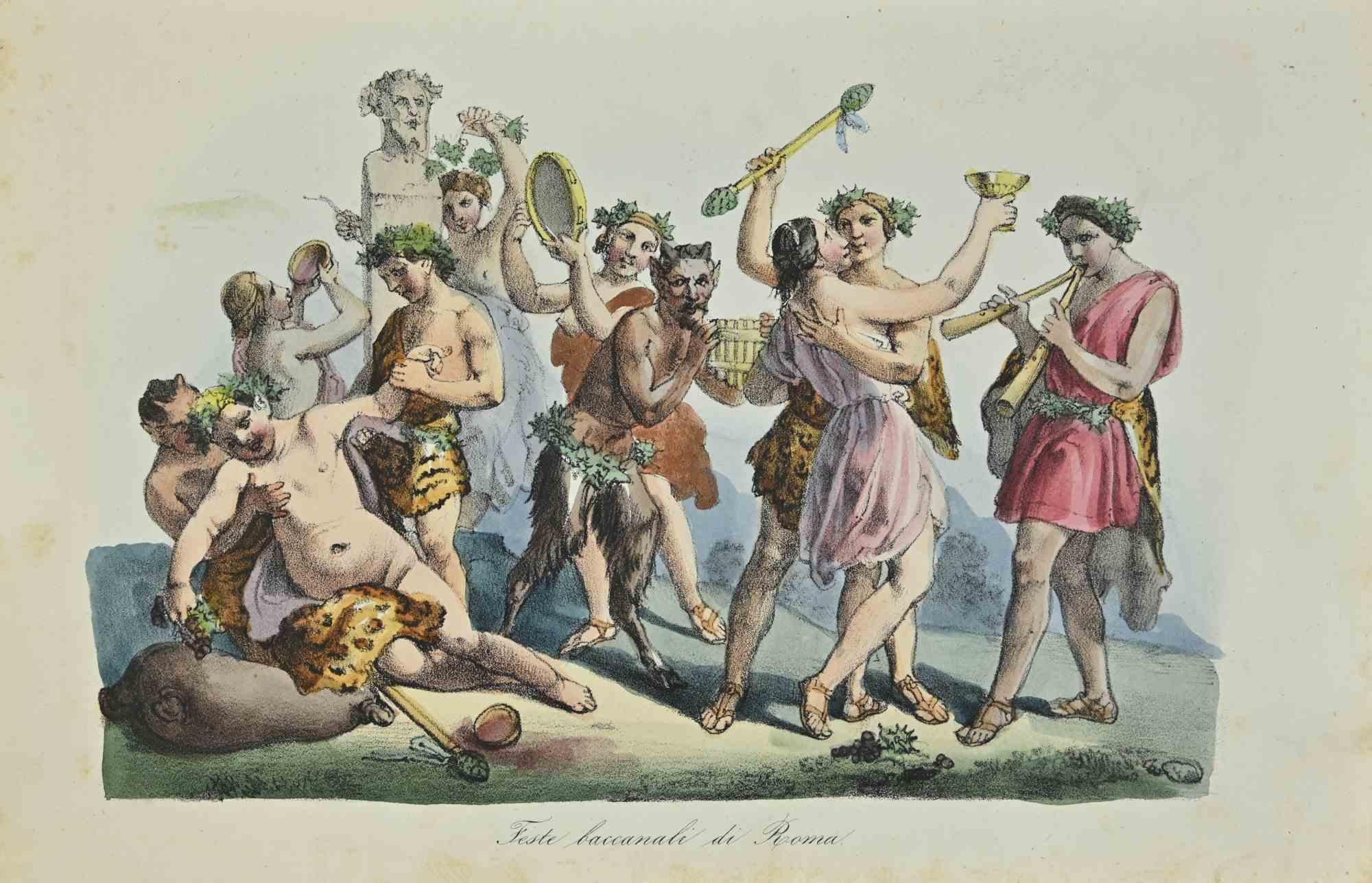
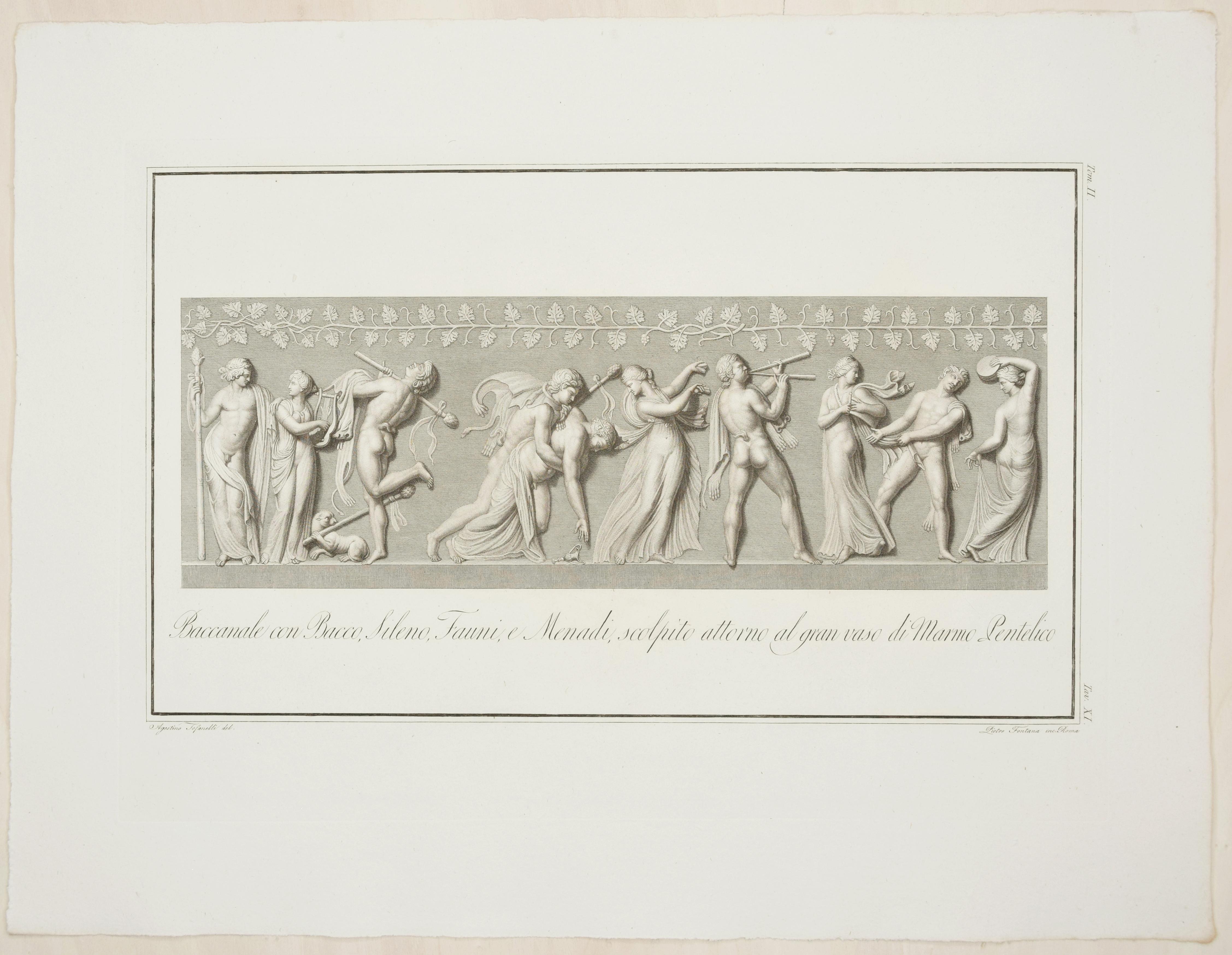
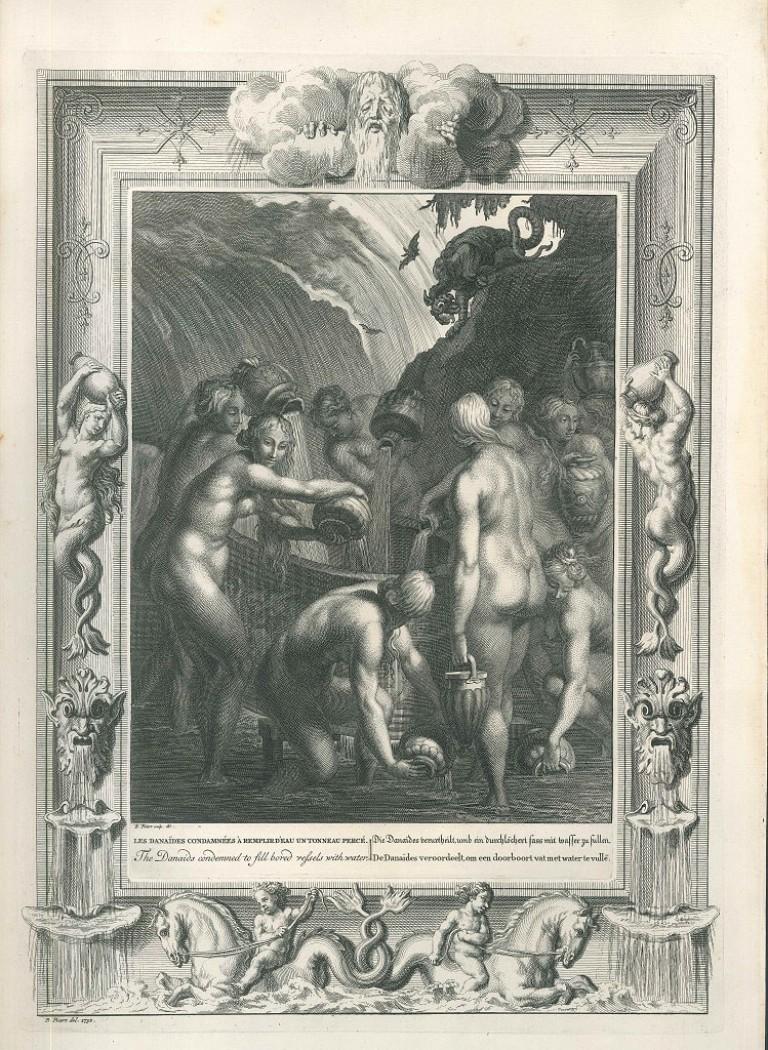
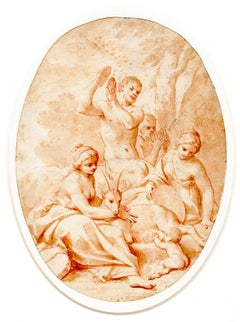
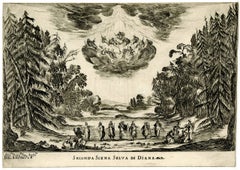
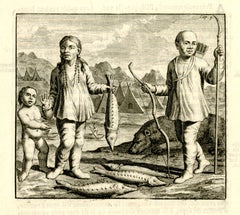
![The Garden of Love (nach Peter Paul Rubens [1577-1640]](https://a.1stdibscdn.com/christoffel-jegher-1596-1652-3-netherlands-prints-works-on-paper-the-garden-of-love-after-peter-paul-rubens-1577-1640-for-sale/a_140/a_147163221719706543029/FA1849_montage_master.jpg?width=240)
